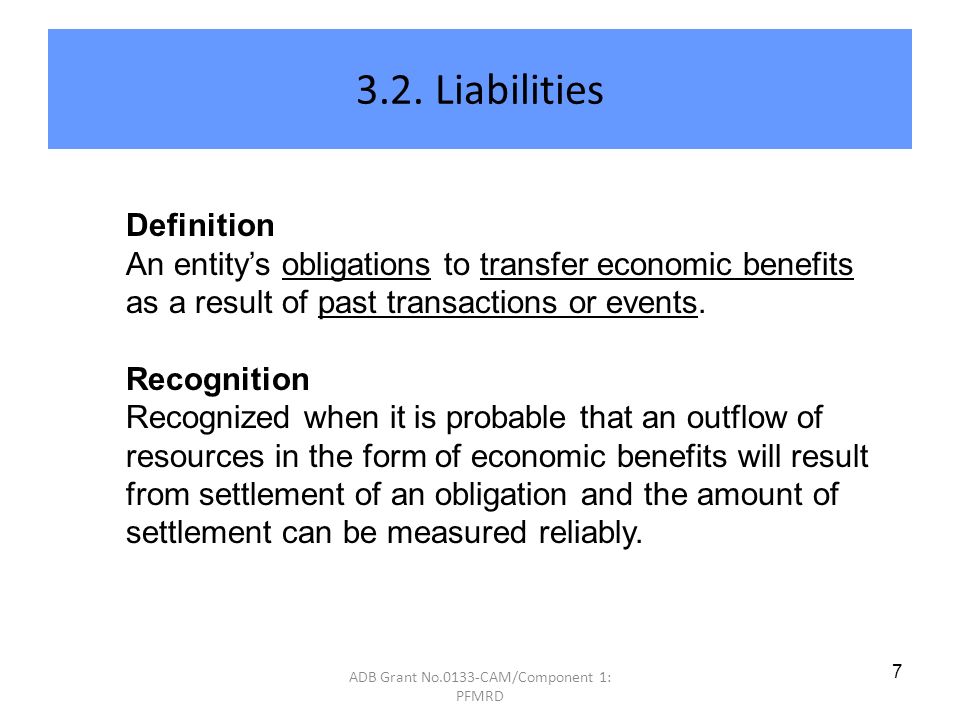Obligation To Transfer Resources From A Past Transaction

The complexities of past transactions can haunt businesses and individuals long after the ink has dried. A seemingly closed deal can reopen, demanding the transfer of resources based on obligations not fully understood or adequately addressed initially.
This article explores the legal and financial quagmire surrounding the obligation to transfer resources from a past transaction. It will delve into the circumstances that trigger such obligations, the potential consequences for involved parties, and strategies for mitigating risks associated with these deferred liabilities. We'll examine case studies and expert opinions to provide a comprehensive understanding of this critical aspect of contract law and financial responsibility.
Defining the Obligation
The obligation to transfer resources from a past transaction, often termed a *deferred liability* or a *contingent obligation*, arises when an agreement creates a future duty to provide assets or services. This duty stems from a completed event, like a sale or service delivery, but its fulfillment is postponed until a later date.
These obligations are more than mere promises. They represent legally binding commitments recognized under accounting standards and legal frameworks, significantly impacting financial reporting and risk assessment.
Common Triggers
Several scenarios commonly trigger the obligation to transfer resources. Warranties, for example, require a seller to repair or replace defective goods after a sale. Similarly, environmental remediation obligations arise when past activities contaminate land, obligating the responsible party to clean it up.
Performance guarantees, frequently used in construction and large infrastructure projects, require contractors to rectify failures to meet specified performance criteria. Furthermore, some contracts include clauses that trigger future resource transfers based on specific events or milestones.
Consider a company that sells software with a one-year warranty. It is obligated to transfer resources – either in the form of repairs, replacements, or support – to customers whose software malfunctions within that year.
Legal and Accounting Perspectives
From a legal standpoint, these obligations are contractual duties. The enforceability depends on the clarity and validity of the underlying agreement. The specific terms of the contract dictate the scope of the obligation and the circumstances under which it is triggered.
According to Generally Accepted Accounting Principles (GAAP) and *International Financial Reporting Standards (IFRS)*, companies must recognize these obligations as liabilities on their balance sheets. This recognition reflects the economic reality of the firm's commitments and ensures transparency for investors and creditors.
The Challenge of Valuation
One of the most significant challenges is accurately valuing these obligations. Estimating the future cost of warranty claims, environmental cleanup, or performance guarantees often involves significant uncertainty. Companies must rely on historical data, industry benchmarks, and expert opinions to arrive at a reasonable estimate.
Inaccurate valuation can lead to misleading financial reporting. Underestimating liabilities can artificially inflate profits, while overestimating can depress earnings and discourage investment.
Consequences of Non-Compliance
Failure to fulfill the obligation to transfer resources can have severe consequences. Legally, it can result in breach of contract lawsuits, leading to damages, specific performance orders, and reputational harm.
Financially, non-compliance can trigger penalties, fines, and increased scrutiny from regulatory bodies. It can also negatively impact a company's credit rating and its ability to secure future financing.
Reputational Damage
Perhaps the most damaging consequence is the loss of trust and goodwill. Customers, investors, and other stakeholders may lose confidence in a company that fails to honor its commitments, leading to long-term damage to its brand and market position.
Mitigating the Risks
Proactive risk management is crucial for minimizing the potential negative impacts of these obligations. This starts with careful contract drafting. Agreements should clearly define the scope of the obligations, the trigger events, and the methods for resolving disputes.
Companies should also implement robust internal controls to track and manage these obligations effectively. This includes establishing processes for estimating liabilities, monitoring trigger events, and ensuring timely fulfillment of the required resource transfers. Strong financial modeling can provide accurate estimates.
Insurance and Hedging
Insurance policies can provide coverage for certain types of obligations, such as environmental remediation and product liability. Hedging strategies, such as surety bonds for performance guarantees, can also help mitigate financial risks.
Investing in robust environmental management systems and implementing quality control measures can significantly reduce the likelihood of triggering these obligations in the first place.
Case Studies
Consider the case of *BP's Deepwater Horizon* oil spill. The company faced billions of dollars in obligations to compensate individuals and businesses affected by the disaster and to clean up the contaminated Gulf of Mexico. The long-term costs associated with this past event continue to impact BP's financial performance years later.
Another example is the *Volkswagen emissions scandal*. The company incurred massive costs to retrofit vehicles, pay fines, and compensate customers for misleading them about the environmental performance of its diesel engines. These costs represent a significant resource transfer obligation stemming from past sales.
The Future Landscape
The obligation to transfer resources from past transactions is likely to become increasingly important in the future. As environmental regulations become stricter and consumer protection laws become more robust, companies will face greater scrutiny and potential liabilities.
Technological advancements, such as blockchain and artificial intelligence, may offer new tools for tracking and managing these obligations more effectively. Enhanced transparency and data analytics can improve the accuracy of liability estimations and facilitate timely fulfillment.
Ultimately, a proactive and responsible approach to managing these obligations is essential for ensuring long-term financial stability and building trust with stakeholders. Ignoring these deferred duties can jeopardize a company's existence.










+each+performance+obligation+is+satisfied..jpg)





.jpg)

